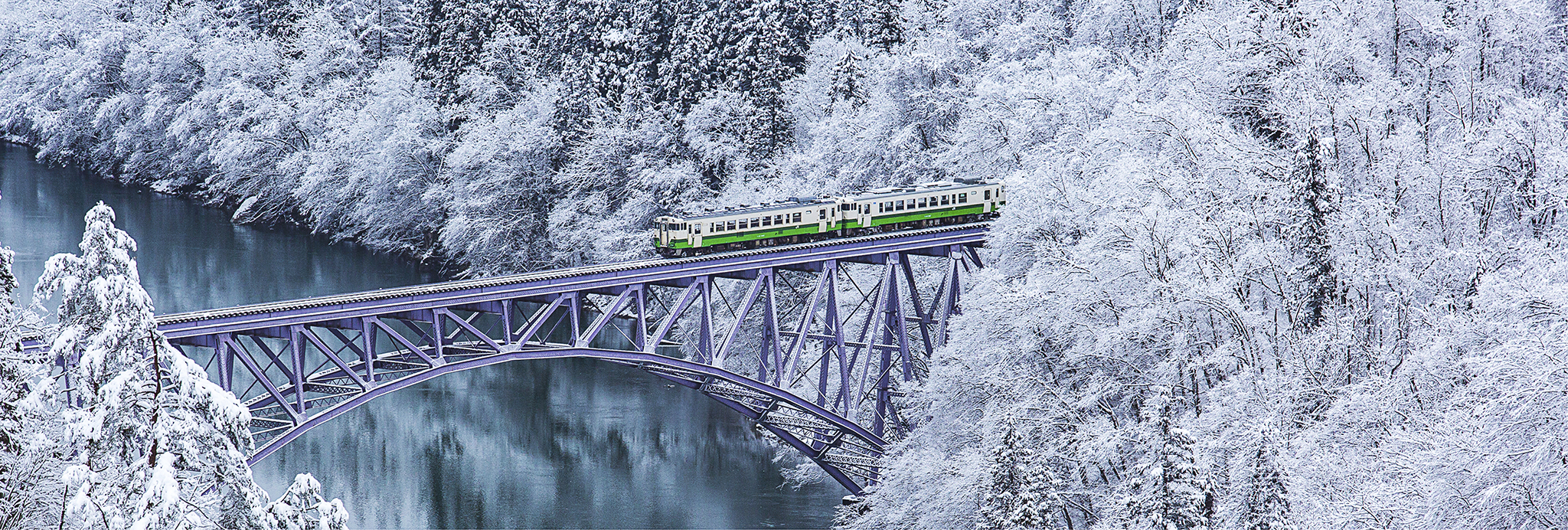
D Snow-covered countryside in Fukushima Prefecture.
冬
winter
Keeping warm and looking ahead
When the last of the fall leaves are crumbling on the ground in Tokyo in late November, winter begins to creep up. You notice it little by little. Under mainly blue skies, the air dries to skin-cracking levels. In vending machines, many of the drinks switch from cold to hot, and at night, the catchy jingle of sweet potato trucks can be heard, bringing with it a charcoal- caramelized aroma that says winter is upon us. And as soon as the Halloween decorations are taken down, up go the winter illuminations, bringing a festive feel across the country.
Warming Food
From December through February, the temperature in many parts of Japan significantly cools, and people turn to warming seasonal foods like stews, curries, and one-pot dishes such as oden to keep out the chill. The most distinctive seasonal food, however, comes toward the end of December, when osechi-ryori (traditional New Year foods) appear in ornate lacquered boxes on dining tables across Japan. Beautifully presented, the boxes contain divided portions of beans, meats, fish, and other small morsels that all have meaning. You’ll see black beans to symbolize health and kobu seaweed because it sounds close to yorokobu, or happiness. There’ll be red and white kamaboko fish cakes, where the white means purity and the red is the color for good luck. In all, there’ll be more than a dozen things to try. Late on New Year’s Eve, people will also eat soba noodles, as the long noodles are said to signify a long life.
christmas and new year
Winter experiences vary wildly in Japan, from the heavy snows of Hokkaido to the pleasant warmth enjoyed in Okinawa, but certain elements play out all over. Christmas is largely cosmetic: Santa visits nursery schools, trees go up in apartment building lobbies, and KFC does its traditional roaring trade in Christmas chicken. But, by and large, no one takes time off work, and the festivities don’t last past Christmas Day. The end of the year is similarly low key. It’s a time for family and resetting for the year ahead. New Year involves a lot of year-end TV and eating—tucking into osechi-ryori while watching the annual Kohaku singing contest and cooking your legs under the kotatsu heated table.
Winter celebrations
One thing that gets many away from the feasting is hatsumode: the first shrine visit of the year to pray for a good year ahead. Many people flock to auspicious shrines like Meiji Jingu in Tokyo and Ise Jingu in Mie Prefecture, while others head to the coast or mountains or to watch the hatsuhinode, the first sunrise of the year. And once the holidays are over, there are plenty of other events to see people through the cold months—none as big as the Sapporo Snow Festival in Hokkaido, which sees giant ice sculptures created around central Sapporo.
